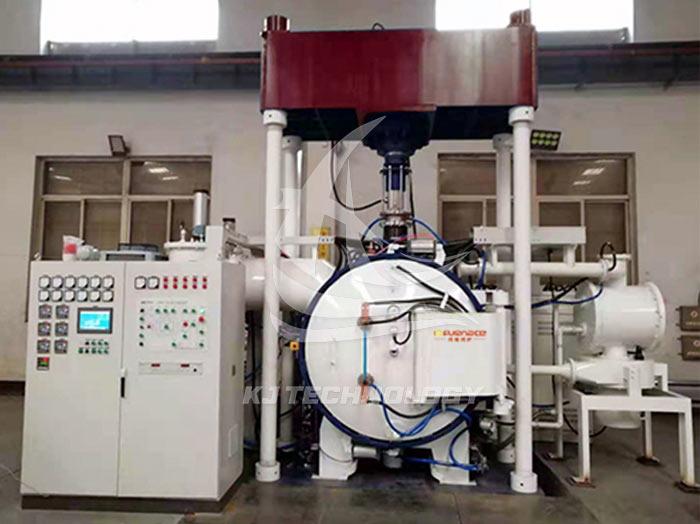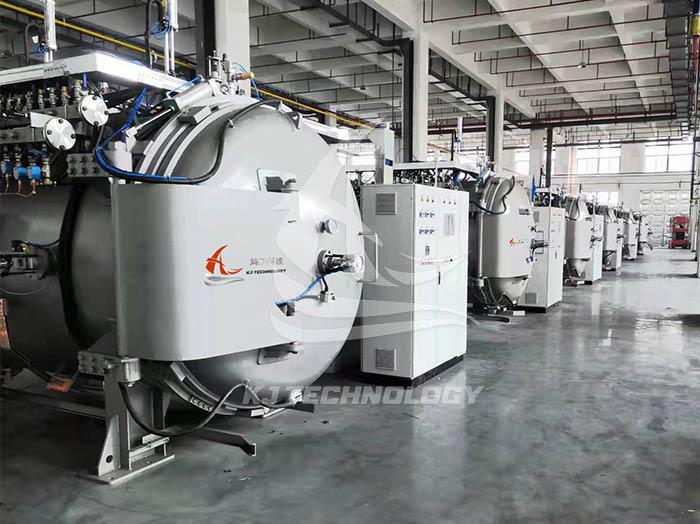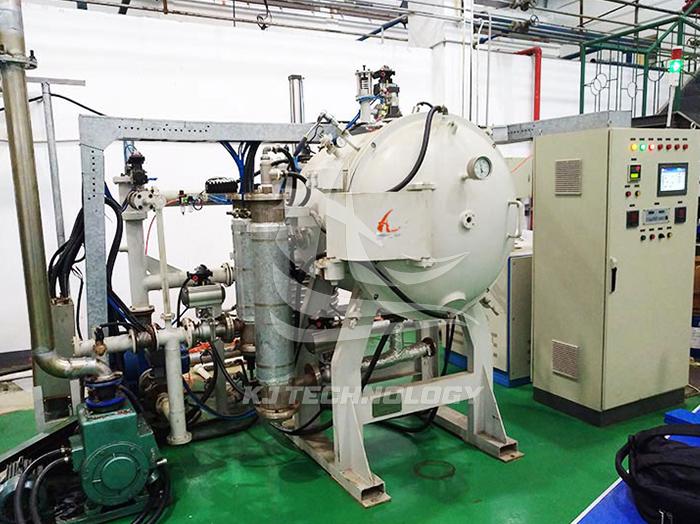Vacuum furnace annealing cannot be evacuated
 10-10-2025 Author: KJ technology
10-10-2025 Author: KJ technology
When annealing in a vacuum furnace, the vacuum cannot be drawn up, which may be caused by leakage, vacuum pump problems, contamination of the furnace body or workpiece, control system failures, etc. The following are specific reasons and solutions:
1. Leakage issue
Reason: The sealing components of the vacuum furnace are aging, corroded, or damaged, causing air leakage into the furnace. In addition, loose pipeline connections, electromagnetic valves, pipe joints, vacuum pump suction valves, and leakage of sealing gaskets around the working chamber may also lead to insufficient vacuum degree.
Solution:
Check and replace aging or broken seals to ensure good sealing.
Check the pipeline connections, solenoid valves, pipe joints, etc., and repair or replace them.
For larger leakage points, flame detection can be used. First, create a vacuum and use a candle or lighter to gradually search near the suspicious point. You will find that the flame is offset towards the leak point, thus finding the leak point.
For internal leakage, it is necessary to conduct zoning inspections from different vacuum working areas of the vacuum furnace. After the vacuum system reaches a certain pressure value, start the winding and evaporation systems separately, and observe whether the reading of the vacuum gauge rises after a brief decrease, which can preliminarily determine the direction of the internal leakage point. Internal leakage often occurs on equipment with water cooling points. No suspicious points were found during the inspection of external leakage, but the pumping speed of the mechanical pump is significantly low, the vacuum gauge reading is low, the mechanical pump oil quickly emulsifies, and the iron-based components in the vacuum chamber are clearly corroded. Therefore, internal leakage can be basically inferred. At this point, the cavity should be cleaned first, and then cooling water should be supplied. Carefully check if there are any wet spots in the water supply pipeline, which are the leakage points.
2. Vacuum pump issue
Reasons: Vacuum pump failure, pump oil contamination, insufficient or too thin, pump overheating, and small clearance caused by mechanical expansion can all lead to poor operation or damage of the vacuum pump, thereby affecting the vacuum degree.
Solution:
Check the operation of the vacuum pump, clean or replace damaged vacuum pump parts.
Clean the vacuum pump and replace it with new vacuum pump oil.
Strengthen the cooling of the pump to ensure that it operates at normal operating temperature.
Check if the power supply is normal, repair or replace damaged vacuum pump parts.
3. Furnace or workpiece contamination
Reason: There are pollutants such as oil stains and impurities on the surface of the furnace or workpiece, which may evaporate or decompose in a vacuum environment, producing gases and affecting the vacuum degree.
Solution:
Thoroughly clean the furnace body and workpiece to remove pollutants such as oil stains and impurities.
Before loading into the furnace, ensure that the surface of the workpiece is dry and free of oil stains.
4. Control system malfunction
Reason: Damage or improper setting of the thermostat, disconnection or short circuit of the thermocouple wire, malfunction of the temperature control instrument, etc., may all cause the control system to malfunction, thereby affecting the vacuum degree.
Solution:
Check and adjust the settings of the thermostat to ensure that the parameters are set correctly.
Replace or reconnect the thermocouple to ensure its proper functioning.
Repair the control system to ensure that it can properly control the operation of the vacuum furnace.








